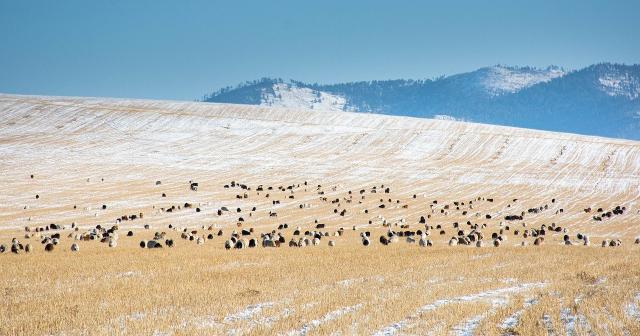With the arrival of winter in June in New Zealand, farmers are being encouraged to prepare adverse weather plans which can be implemented if the weather turns bad.
Will Halliday, a senior advisor with Beef + Lamb New Zealand’s recommends that farmers should consider how they will deal with heavy snow falls or prolonged periods of wet weather and put together an action plan.
He advised that factors such as electricity (availability of back-up generators) and water supplies, supplementary feed, access, shelter, stand-off areas and priority stock classes should all be considered by New Zealand farmers when putting a plan together for the winter.
June to August are winter months in New Zealand and bring colder weather to much of the country and more rain to most areas in the North Island.
“Having a plan takes the stress out of decision-making during adverse events and ensures the whole farm team knows what is required,” Halliday said.

Ideally, Halliday said farmers in snow-prone areas should have two to three weeks’ worth of supplements on hand in case of heavy snow. This supplement could make up 100% of an animal’s diet.
Feeding supplements to young stock early in winter will get them used to the feed if it is needed during an adverse weather event.
The advisor said if snow is forecasted, farmers should feed up to 50% more before it snows as stock typically eat more before a storm and less during it.
The initial requirement of stock is to keep warm, so where possible, Halliday said they should be offered 20% above their maintenance requirements.
Water
The advisor said water needs to be available to stock for at least six hours per day, particularly if they are being fed large volumes of dry supplement.
“Stock will die of dehydration well before they die of malnutrition, so it is important to use a generator for the water pump if the power is off or move stock so they can access water.”
New Zealand farmers will this winter will have to bear in mind that ice on troughs will need to be broken and removed to stop re-freezing and checked to ensure stock have access to clean water.
Forage crops
To minimise damage to winter forage crops in New Zealand during snow or prolonged wet weather, Halliday said providing a sheltered, well-drained stand-off area with access to water and feed supplements will help protect soils and crops and maintain animal welfare.
If snow has broken kale and rape off at ground level, then these crops will need to be fed before they rot.
“If they are just bent, they will keep growing. Bulb crops typically won’t be affected by snow and fodder beet is particularly valuable as stock can get back onto it quicker than other crops.
Cattle can also dig into snow to uncover the bulbs, Halliday added.
If oat crops are flattened, the advisor said they should be fed as soon as possible. Oats will rot and go slimy within a couple of weeks. Freezing bursts the cell walls increasing the rate of deterioration.
Supplementary feed
To minimise wastage when feeding grain or nuts, Halliday suggests feeding out on top of silage, against fence lines, under a back-fence electric wire or on frosted ground.
Cattle can be held on straw if necessary and straw can be fed with brassicas or silage to help balance their diet.
Halliday said once transitioned onto grain, which should be done gradually starting with 50g/ewe and building by 50g/head/week, ewes can be fed up to 300g/head/day.
“Watch for signs of grain overload or acidosis which include grey scour. If this occurs immediately drop back the quantity of grain being fed,” he added.

